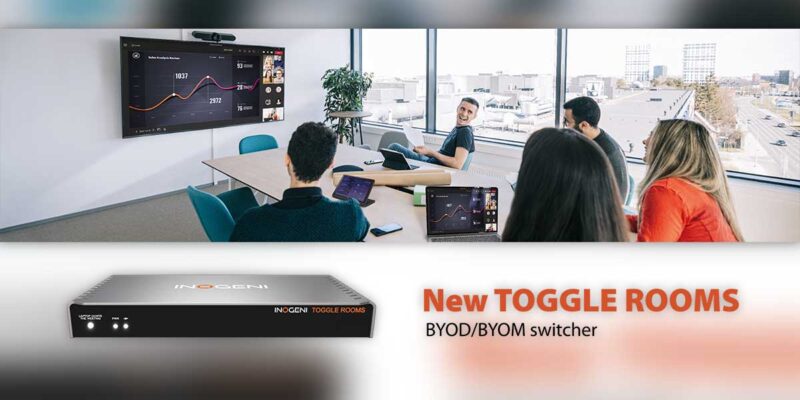The “Active” Classroom
 For the past several years, one of the buzzwords in education has been the “active learning classroom.” In fact, the active classroom even made the list of EduCause’s Top 10 Emergent Technologies for 2017. While the concept is not new, the implementation is new. I remember hearing about similar concepts back when (way back when) I was in college. In the teacher education courses we were always encouraged to be the “guide on the side” rather than the “sage on the stage.” This is the same idea for active learning and the flipped classroom. Students show up to class not to be lectured to, but rather to learn by doing and by sharing with others. This may occur through several methods, but to be truly successful at it, faculty are going to have to change most of their traditional way of teaching. At the same time, AV designers and integrators are going to have to change their traditional approach to classroom design.
For the past several years, one of the buzzwords in education has been the “active learning classroom.” In fact, the active classroom even made the list of EduCause’s Top 10 Emergent Technologies for 2017. While the concept is not new, the implementation is new. I remember hearing about similar concepts back when (way back when) I was in college. In the teacher education courses we were always encouraged to be the “guide on the side” rather than the “sage on the stage.” This is the same idea for active learning and the flipped classroom. Students show up to class not to be lectured to, but rather to learn by doing and by sharing with others. This may occur through several methods, but to be truly successful at it, faculty are going to have to change most of their traditional way of teaching. At the same time, AV designers and integrators are going to have to change their traditional approach to classroom design.
For these integrators and designers, a potential downside of the active learning classroom is that technology may play a minor role (or at least it looks like it does). Many designs try to get away from any type of “front of room.” This eliminates the need for a single large projector and screen. Additionally, in most cases the podium is taken away as well. Furniture in the room is typically round or octagonal — again, removing the idea of a front of room. I have seen designs and pictures of these type of classrooms that have no technology in them. There are whiteboards that cover the walls, and in some cases the tables. There are no computers in the room, no monitors, no projectors and no sound. Bad news, huh?
Not completely. While those designs exist, there are equally as many designs that use a good deal of technology. Many of them have smaller (~32”) monitors at each table. They encourage students to bring their own devices and collaborate with each other using the monitors. The teacher may choose to take any one of the monitors and push it to all the rest, or push their own material to all the monitors. I believe that the classrooms built with no technology will eventually change and bring in the technology. Trying to teach today, without using any type of display or audio or internet resource leaves students feeling like what they are learning is not relevant. So there is still hope for the designers and integrators in the AV space.
As always, however, we need to continue to grow, learn and listen. What you will quickly realize is that there is no firm pattern for active classrooms. Perhaps some of the most in-depth work started at NC State with the SCALE-UP classrooms. An internet search will provide you with their website with lots of great information. As you prepare to travel to InfoComm, be thinking about active classrooms and how they will transform your designs and installations over the next several years.
I believe there are five things for designers to consider when planning an active learning classroom. All of them may not be under your control, but being aware of them, and making your clients aware of them will build trust. Additionally, by helping your clients think through these issues, you will position the rooms for success, and therefore more installs in the future.
- Wireless connectivity — This may seem like a no-brainer in 2017, but active classrooms need to have robust wireless network connections. In a room with college students, you should expect that you will have at least twice as many devices as you do students. They all have computers and they all have phones. Several may have tablets or even multiple computers. In this learning environment they will be encouraged to use the devices, unlike traditional classrooms where they are asked to put them away. Make sure your client’s infrastructure team is aware of what is being designed and have proper coverage for the space. Remind them that coverage that worked in the past (where students were asked not to use devices) will not work in an environment where they need to use the devices.
- Wireless display — People hate wires and consumer technology has moved away from wires. The same will be expected in these classrooms. You must design system that incorporates wireless display technologies. The technologies must be simple for students and faculty to use. I don’t know that I have yet to see a device that could solve this problem, so when you figure it out, please, let us all know!
- Don’t forget about wires — Yes, I know I just wrote that you need to go wireless. However, power is still needed for all these devices. While battery lives are getting better and better, people will continue to show up and need to charge their devices. This is a place where the computing industry moving to USB-C will be helpful to you. Having several USB-C chargers available will cover many of the devices that are brought in. Several lightning connectors for iDevices should suffice for the rest.
- Programming and ease of use — This is perhaps the most important issue. If the users can not figure out how to use the room, then it will not succeed. There are some complex technologies in these installs and making the use easy will be a challenge. Get some of your best programmers to start thinking about it now. Be creative. I have seen installs where all the chairs at each table were the same color and the associate monitors were framed out in paint with that same color. The faculty and students could easily refer to groups and share their work by referencing the colors. If you do not believe you can program a room that is simple to use, I suggest you pass on the job. Otherwise, your client will see you as the problem and not ask for you to return.
- Flexibility — Another challenge for designers that goes along with number four, above. Everyone wants the room to be flexible. This may mean no hard wiring of the tables or furniture. It may mean extra monitors for when a room is configured different ways. What it really means is that you need to listen to your customers and design what they are asking for. Make sure your customers fully understand what they may be giving up, in order to gain flexibility.
For those of us who are always looking for fun new challenges, this is a very exciting development. During this InfoComm season is the perfect time to start thinking about the new designs. When you are on the show floor, keep these challenges in mind and keep your eyes open for furniture, control systems, mounts, displays and wireless technology that will help you design these spaces.





